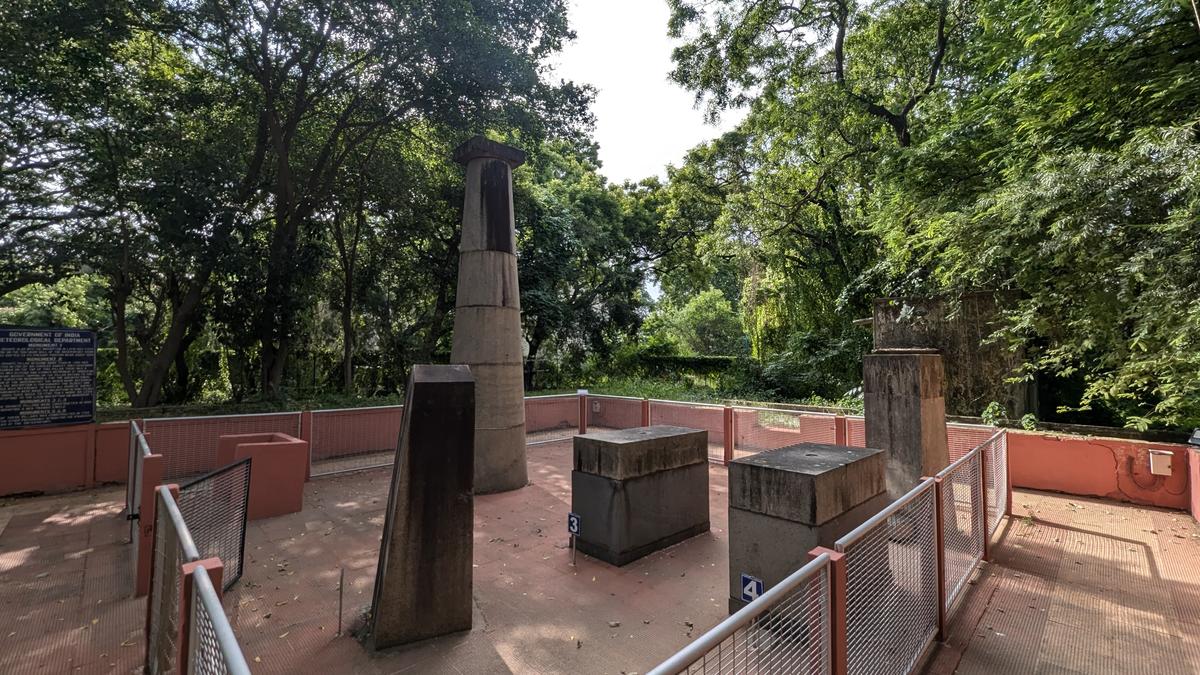
How The Madras Observatory paved the way for significant astronomical discoveries
The Hindu
The Madras Observatory, a historic site of scientific innovation in India, leaves a lasting legacy in astronomy and meteorology.
The Madras Observatory, established in 1792 by the East India Company, is testament to the intertwined history of science, colonialism, and innovation in India. Its legacy is etched on its granite pillars and the astronomical discoveries it fostered continue to resonate today.
The story begins in 1785 with the arrival of Michael Topping, an astronomer and surveyor employed by the East India Company. Tasked with enhancing navigation in the region, Topping charted the Coromandel coast and currents of the Bay of Bengal between Madras and Calcutta.
According to the UNESCO Portal to the Heritage of Astronomy, at the time, William Petrie, member of the Madras Governor’s Council, had already established a private observatory at his Egmore residence. On December 5, the longitude and latitude of Masulipatnam were recorded, likely at Petrie’s observatory. This observatory, equipped with instruments like a 20-inch transit and a 12-inch azimuth transit circle instrument,which were owned by Petrie, made up the nucleus of the Madras Observatory. When Petrie returned to England in 1789, he handed over the equipment to the Madras Government.
“The exact location of Petrie’s home observatory in Egmore is unknown to us, but it could just be a confusion, as Nungambakkam becomes Egmore. For all we know, it could have been the same location,” says historian V Sriram.
Recognising the scientific and strategic value of such a facility, Topping urged the Council to establish a dedicated observatory. His appeal, echoing a previous plan by engineer Patrick Ross, finally swayed the Court of Directors in London, who sanctioned the observatory’s construction in 1790. Two years later, in 1792, the Madras Observatory was inaugurated, housing Petrie’s instruments and a conical pillar designed to support a 12-inch azimuth (an instrument that helps provide the horizontal coordinates of an object in the sky).
John Goldingham, who had served as Petrie’s assistant, was appointed as the observatory’s first official astronomer. Goldingham’s tenure, lasting until 1830, was marked by significant contributions. He initiated meteorological observations in September 1793, meticulously recording data that would form the foundation of India’s earliest meteorological records. These records, along with a meteorological register established in 1796, provide invaluable insights into the region’s climatic history.
In 1802, the Madras Time Zone was established by Goldingham, which is also known as the Railway Time. When the British colonised India and introduced the Railways, it came to their attention that time was not standardised throughout the country. Bombay and Calcutta had their own time zones which made operations difficult. Just as they had standardised time in England according to the Royal Observatory in Greenwich, they did with the Madras Observatory in India. The Madras Time, till date, is followed as the official time of the Indian Railways.













